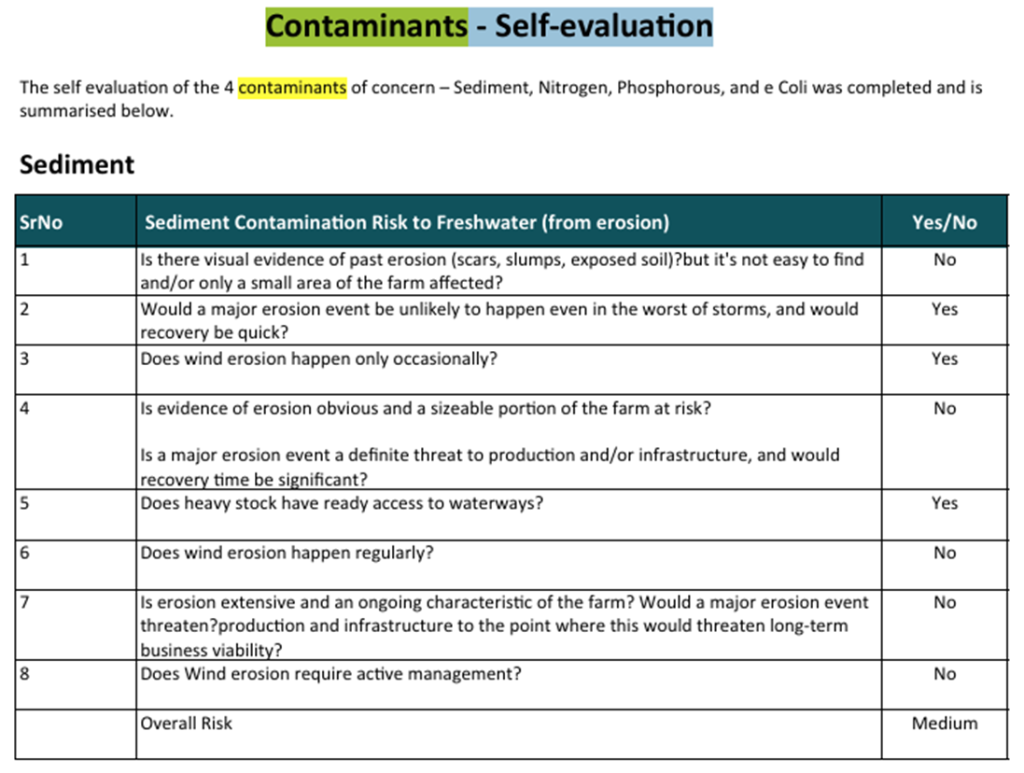The Fresh Water Farm Plan tool now includes a feature to help you manage and mitigate contamination risks on your farm: the Contaminant Self-Evaluation Tool. This tool is designed to guide you through identifying potential contaminants that may affect the health of your farm and surrounding water sources.
This tool is a yes/no guide to help identify contaminants on your farm
Contaminant – Self-evaluation Page
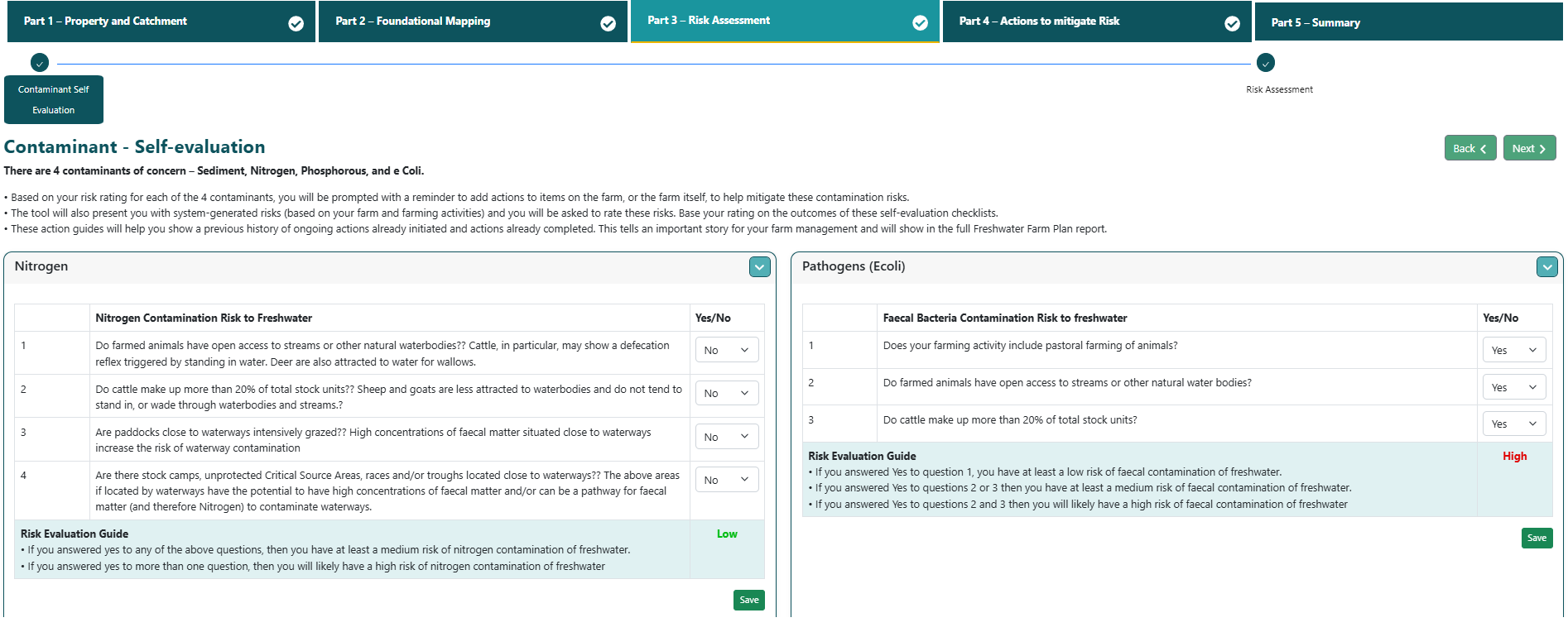
What Are the Key Contaminants?
There are four main contaminants that the tool focuses on:
- Sediment
- Nitrogen
- Phosphorous
- E. Coli
These substances can significantly impact both the productivity of your farm and the quality of nearby water sources. The Contaminant Self-Evaluation Tool helps you assess the risk these contaminants pose to your farm.
How Does the Contaminant Self-Evaluation Tool Work?
The tool is a simple yes/no guide that asks you specific questions about your farm’s practices and conditions. Based on your responses, it will evaluate the risk level for each of the four contaminants.
For each contaminant, you’ll be prompted with reminders to add actions to your farm management plan to address and mitigate the identified risks. These actions can include both ongoing efforts and new initiatives to improve farm sustainability.
Each Contaminant has its own set of Yes/No Questions that will help evaluate your farms risk of Contamination.

Risk Assessment and Contaminants
Once completed the level of risks will appear in the ‘Risk Assessment’ Page

Although these risks have been identified it is still up to the creator of the Fresh Water Farm plan to associate this level of risk to the land units created on the ‘Land Units (LU’s)’ page.
The contaminants will be automatically be populated into the relevant sections.
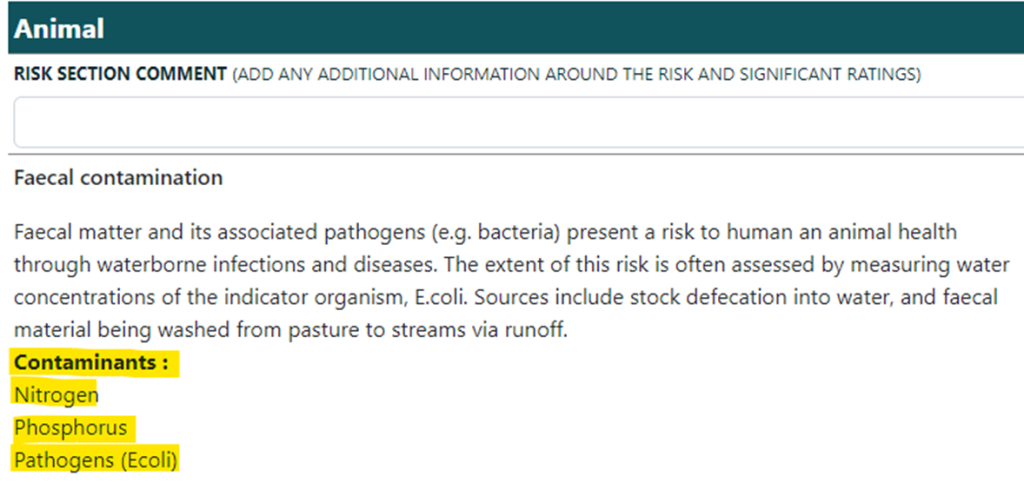
These contaminants also appear on the Risk Management page as identified pollutants for their relevant areas.
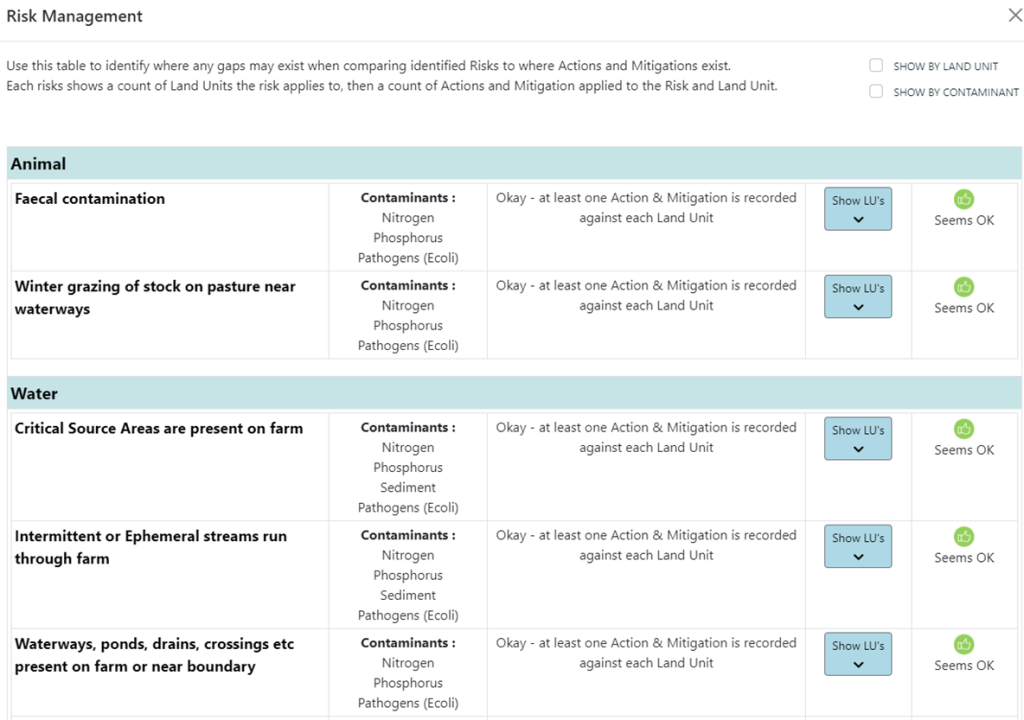
Incorporating the Evaluation into Your Fresh Water Farm Plan
Once you’ve completed the self-evaluation, the tool will generate a summary of the contamination risks. This information is integrated into several key sections of the Fresh Water Farm Plan report:
- Improving Water Quality: This section includes a table summarizing the contaminant name, your risk rating, and the number of actions you’ve taken to address each risk.
- Risk Assessment, Actions, and Mitigations: Here, the results of your self-evaluation are displayed alongside the farming activities, catchment areas, and land units associated with your farm. Each identified risk is matched with relevant mitigation actions.
- Appendix: The appendix provides a detailed account of your answers to the yes/no questions, giving a clear overview of how each risk was assessed.

The next area we can see Contaminants is under the ‘Risk Assessment, Actions and Mitigations’ page of the report.
Here we can see the Contaminant Self-Evaluation results along with the Farming Activities, Catchment and Land Units created for your farm.
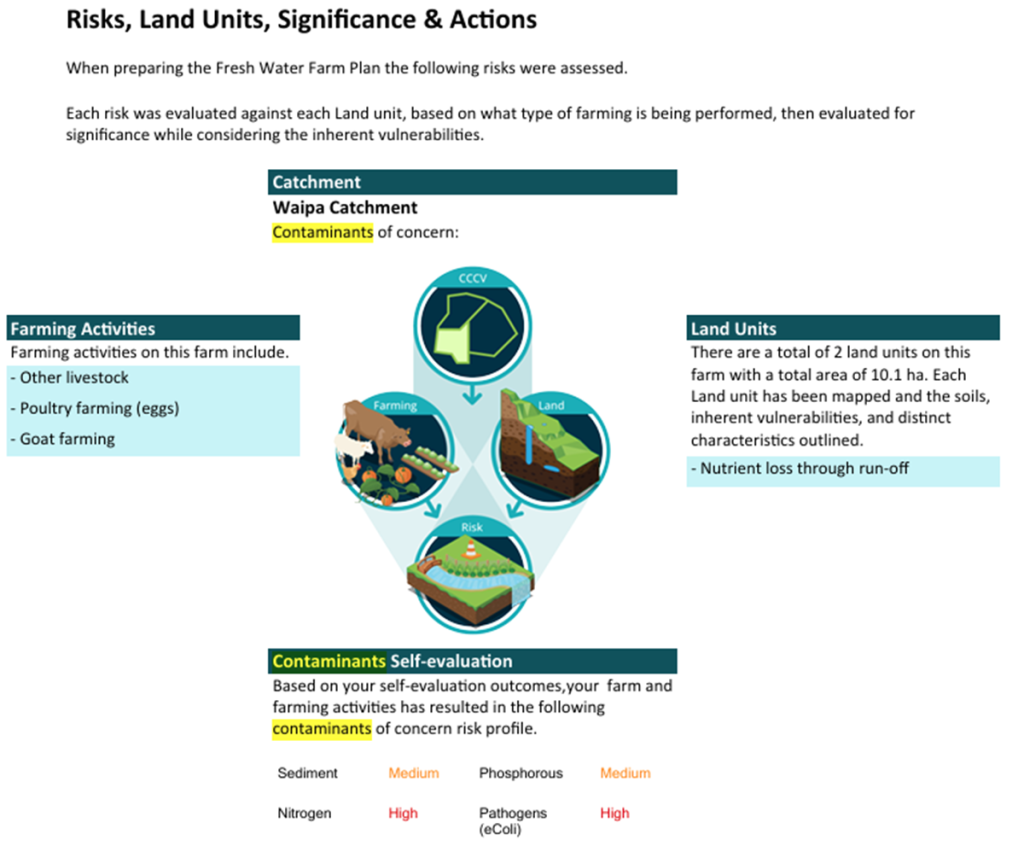
Continuing on through the Risk Assessment section of the report the Contaminants will be listed against each risk created during the Risk Assessment and Management process in the report nuilding process.
We can also see the Land unit, its significance to that risk and the number of Actions created to mitigate them.
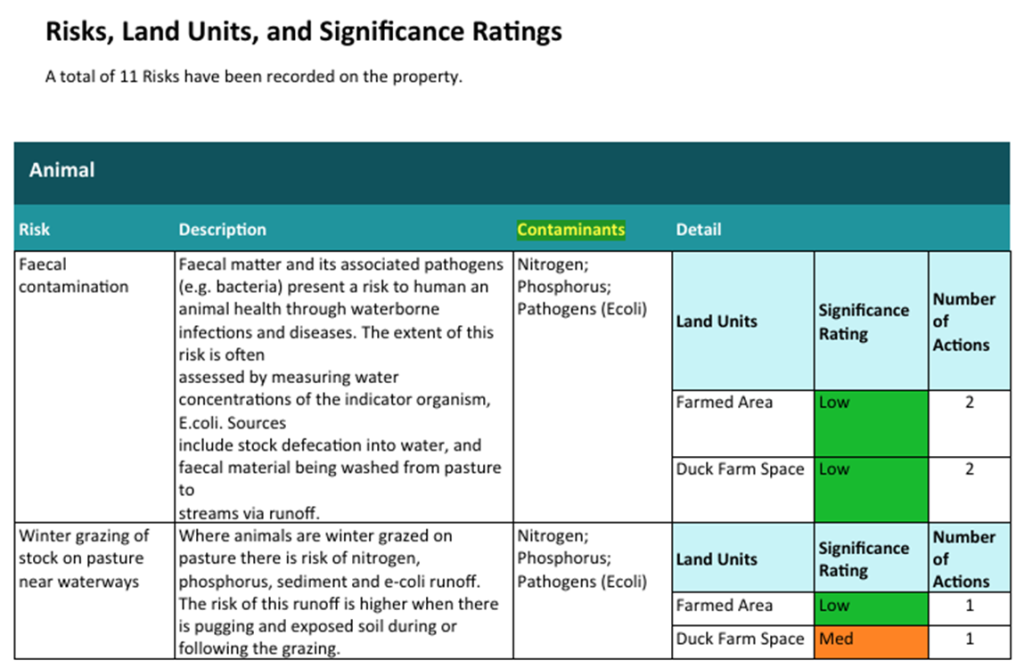
Next Steps: Using Your Evaluation Results
The results from your self-evaluation are not just for documentation—they’re actionable insights that can help you make informed decisions about managing your farm. By addressing the identified risks.
